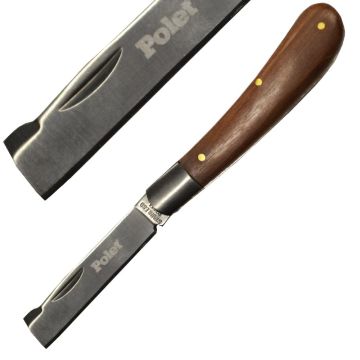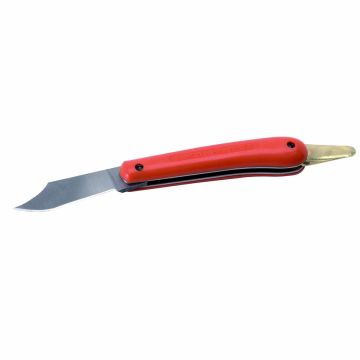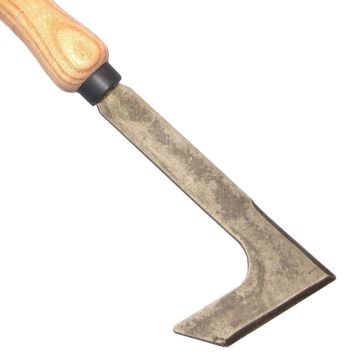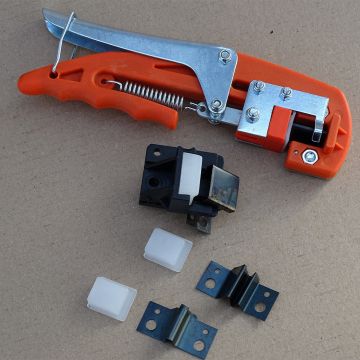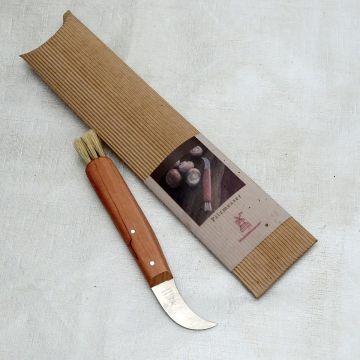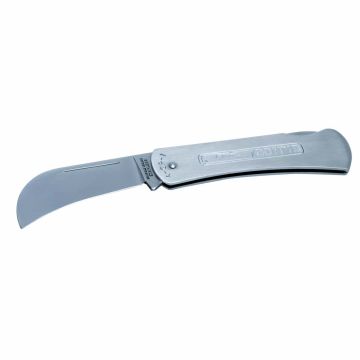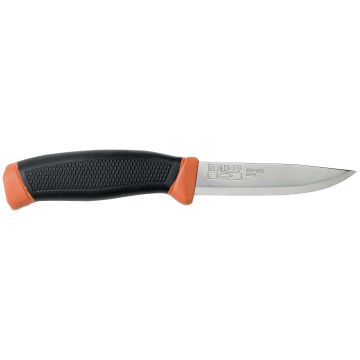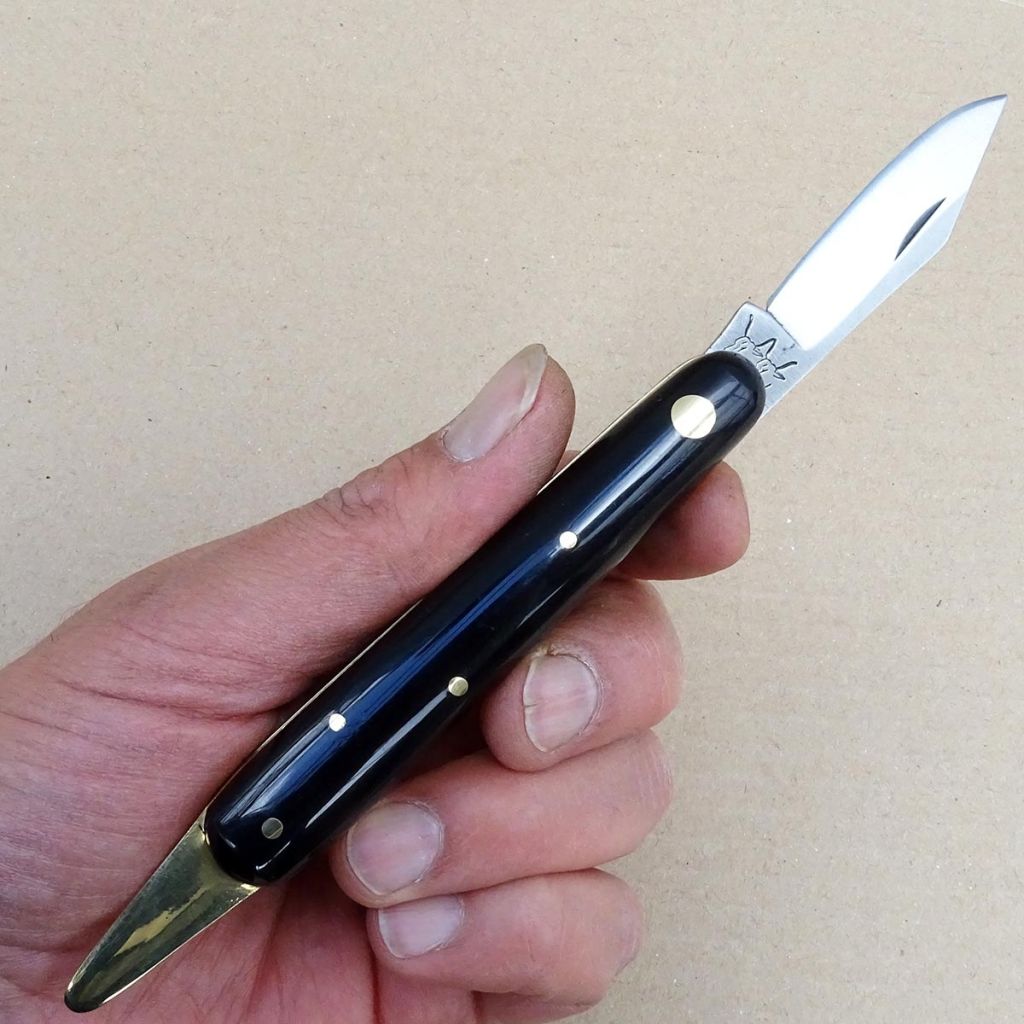

Due Buoi Fruit Tree Grafting Knife
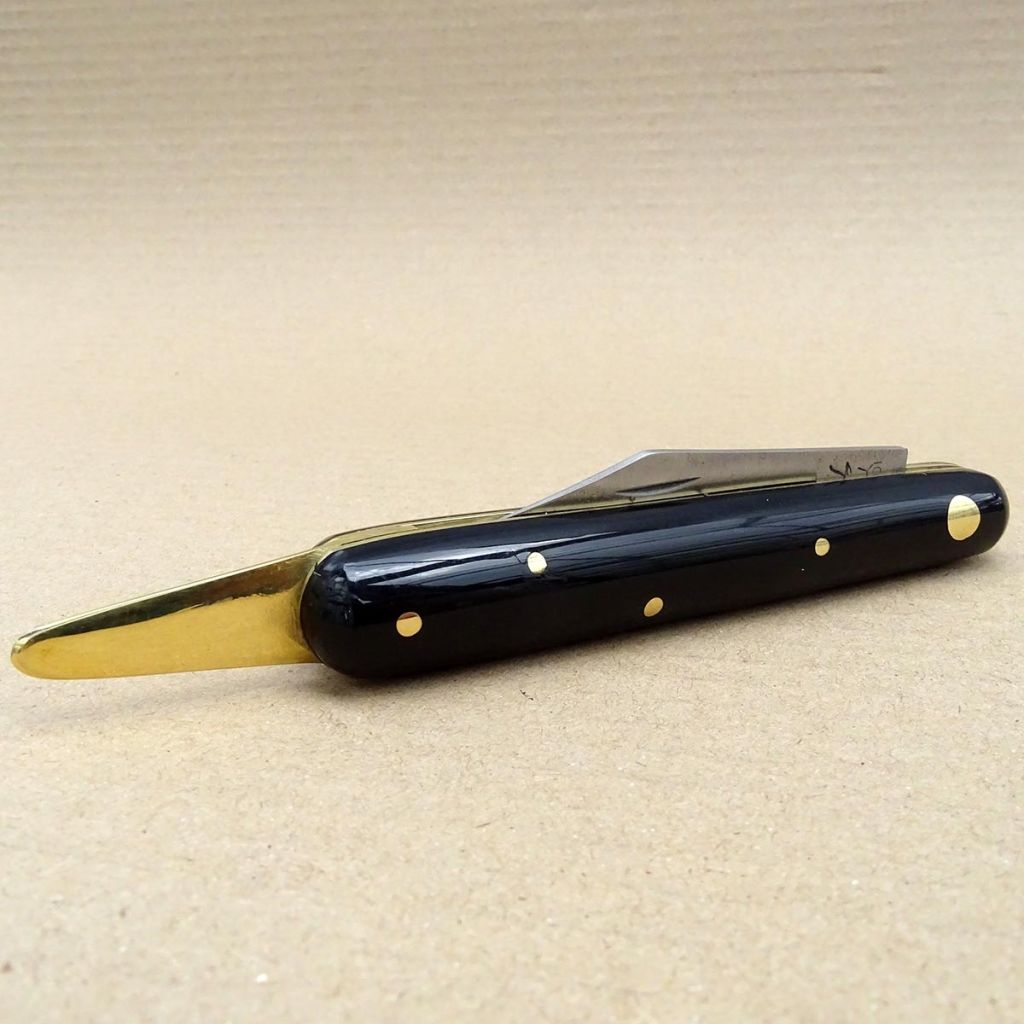

Due Buoi Fruit Tree Grafting Knife
Due Buoi Fruit Tree Grafting Knife
We guarantee the quality of our plants for a full growing cycle, and will replace at our expense any plant that fails to recover under normal climatic and planting conditions.
From €5.90 for pickup delivery and €6.90 for home delivery
Express home delivery from €8.90.
The Due Buoi grafting knife for fruit trees is a straight grafting knife with a 5cm (2in) steel blade set in an ebonite handle. It is particularly suited for bud grafting thanks to its short, pointed blade that ensures precise work on the rootstock. It is also suitable for other grafting techniques such as whip and tongue, cleft, omega, or side grafting. Bud grafting is mainly practiced on fruit bushes, vines, and roses because their pith is often fragile and does not tolerate cleft grafting well. This technique is particularly recommended for stone fruit trees.
Dimensions:
- Head: 5mm
- Total length: 190mm (8in)
This fruit tree grafting knife is a small handheld tool with an extremely sharp, pointed, and relatively short steel blade that remains easy to handle. It is used to graft bushes to obtain plants identical to the scion, while benefiting from the qualities of the chosen rootstock. This practice is reserved for experienced gardeners and professionals as it requires good technical mastery, but with this knife and the following advice, you can achieve beautiful grafts. This knife is mainly used for bud grafting, which is primarily practiced on fruit trees, vines, and roses. It involves taking "buds" from the plant to be propagated, that is, an eye located on a healthy and medium-sized branch of the desired plant, called the scion.
The first piece of advice is to wear gloves because grafting requires precise and quick movements with a perfectly sharpened tool.
To obtain good results with this type of graft, it is best if your scion and rootstock have a similar diameter.
Grafting in August using budding grafting:
On the rootstock: at the desired height for grafting, trace a T with the sharp part of the knife. With the spatula of the grafting knife, lift the bark on each side of the T to expose the cambium (the most vital part of the plant, where the most sap circulates). Be careful! A properly sharpened budding knife can cut your thumb just as easily as cutting the rootstock.
On the scion: choose an eye and cut the leaf, leaving a small amount of petiole. With the grafting knife, start 2cm (1in) above the eye and slide along the stem to lift the cambium up to about 1cm below the eye. Once the bud has been removed, insert it into the T on the rootstock, paying attention to the direction of insertion, with the leaf pointing upwards. Gently compress the bud so that the two cambiums come into contact. Cut off the part of the bud that exceeds the incision so that the ligature completely surrounds the graft. For dormant bud grafting (the bud stays on during winter), you can completely cover the eye. In spring, you will need to cut the rootstock above the graft so that the bud can emerge. You can repeat the operation on the opposite side of the rootstock stem to obtain a beautiful balanced head during regrowth.
Technical features
Tips
Other Knives and grafting knives
This item has not been reviewed yet - be the first to leave a review about it.
Haven't found what you were looking for?
Hardiness is the lowest winter temperature a plant can endure without suffering serious damage or even dying. However, hardiness is affected by location (a sheltered area, such as a patio), protection (winter cover) and soil type (hardiness is improved by well-drained soil).

Photo Sharing Terms & Conditions
In order to encourage gardeners to interact and share their experiences, Promesse de fleurs offers various media enabling content to be uploaded onto its Site - in particular via the ‘Photo sharing’ module.
The User agrees to refrain from:
- Posting any content that is illegal, prejudicial, insulting, racist, inciteful to hatred, revisionist, contrary to public decency, that infringes on privacy or on the privacy rights of third parties, in particular the publicity rights of persons and goods, intellectual property rights, or the right to privacy.
- Submitting content on behalf of a third party;
- Impersonate the identity of a third party and/or publish any personal information about a third party;
In general, the User undertakes to refrain from any unethical behaviour.
All Content (in particular text, comments, files, images, photos, videos, creative works, etc.), which may be subject to property or intellectual property rights, image or other private rights, shall remain the property of the User, subject to the limited rights granted by the terms of the licence granted by Promesse de fleurs as stated below. Users are at liberty to publish or not to publish such Content on the Site, notably via the ‘Photo Sharing’ facility, and accept that this Content shall be made public and freely accessible, notably on the Internet.
Users further acknowledge, undertake to have ,and guarantee that they hold all necessary rights and permissions to publish such material on the Site, in particular with regard to the legislation in force pertaining to any privacy, property, intellectual property, image, or contractual rights, or rights of any other nature. By publishing such Content on the Site, Users acknowledge accepting full liability as publishers of the Content within the meaning of the law, and grant Promesse de fleurs, free of charge, an inclusive, worldwide licence for the said Content for the entire duration of its publication, including all reproduction, representation, up/downloading, displaying, performing, transmission, and storage rights.
Users also grant permission for their name to be linked to the Content and accept that this link may not always be made available.
By engaging in posting material, Users consent to their Content becoming automatically accessible on the Internet, in particular on other sites and/or blogs and/or web pages of the Promesse de fleurs site, including in particular social pages and the Promesse de fleurs catalogue.
Users may secure the removal of entrusted content free of charge by issuing a simple request via our contact form.
The flowering period indicated on our website applies to countries and regions located in USDA zone 8 (France, the United Kingdom, Ireland, the Netherlands, etc.)
It will vary according to where you live:
- In zones 9 to 10 (Italy, Spain, Greece, etc.), flowering will occur about 2 to 4 weeks earlier.
- In zones 6 to 7 (Germany, Poland, Slovenia, and lower mountainous regions), flowering will be delayed by 2 to 3 weeks.
- In zone 5 (Central Europe, Scandinavia), blooming will be delayed by 3 to 5 weeks.
In temperate climates, pruning of spring-flowering shrubs (forsythia, spireas, etc.) should be done just after flowering.
Pruning of summer-flowering shrubs (Indian Lilac, Perovskia, etc.) can be done in winter or spring.
In cold regions as well as with frost-sensitive plants, avoid pruning too early when severe frosts may still occur.
The planting period indicated on our website applies to countries and regions located in USDA zone 8 (France, United Kingdom, Ireland, Netherlands).
It will vary according to where you live:
- In Mediterranean zones (Marseille, Madrid, Milan, etc.), autumn and winter are the best planting periods.
- In continental zones (Strasbourg, Munich, Vienna, etc.), delay planting by 2 to 3 weeks in spring and bring it forward by 2 to 4 weeks in autumn.
- In mountainous regions (the Alps, Pyrenees, Carpathians, etc.), it is best to plant in late spring (May-June) or late summer (August-September).
The harvesting period indicated on our website applies to countries and regions in USDA zone 8 (France, England, Ireland, the Netherlands).
In colder areas (Scandinavia, Poland, Austria...) fruit and vegetable harvests are likely to be delayed by 3-4 weeks.
In warmer areas (Italy, Spain, Greece, etc.), harvesting will probably take place earlier, depending on weather conditions.
The sowing periods indicated on our website apply to countries and regions within USDA Zone 8 (France, UK, Ireland, Netherlands).
In colder areas (Scandinavia, Poland, Austria...), delay any outdoor sowing by 3-4 weeks, or sow under glass.
In warmer climes (Italy, Spain, Greece, etc.), bring outdoor sowing forward by a few weeks.

































